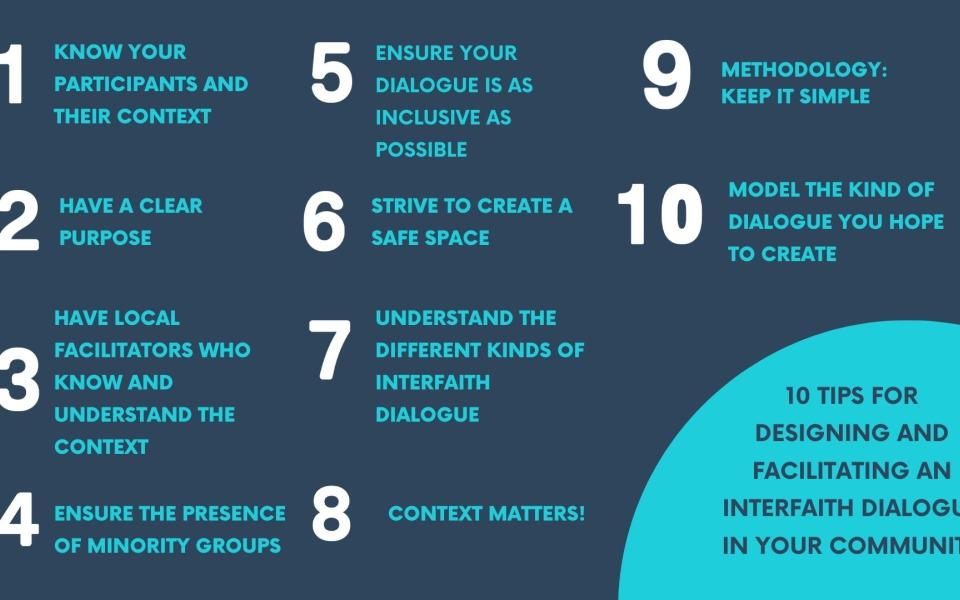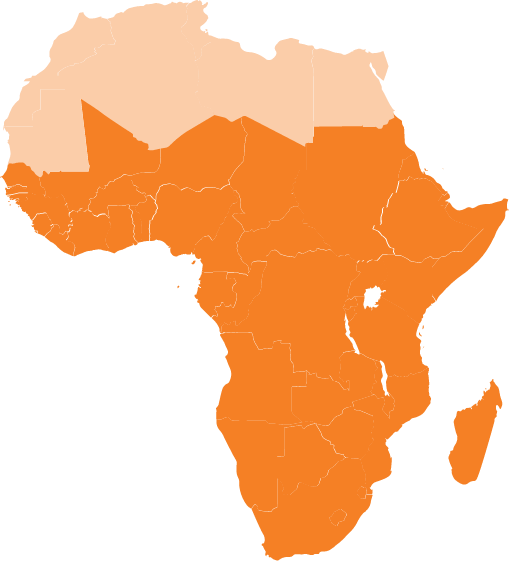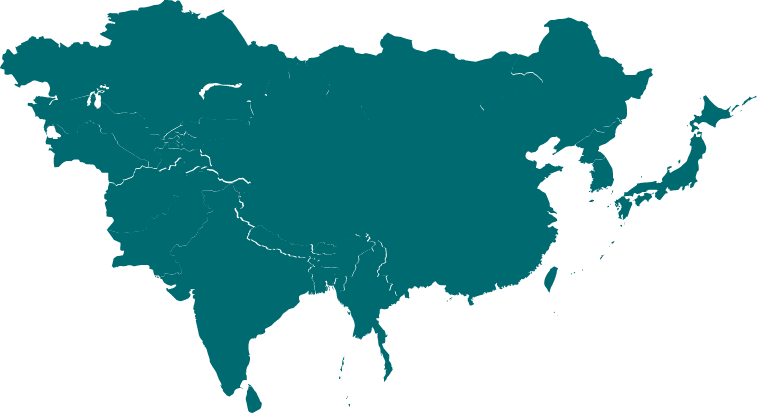
When designing and facilitating an interfaith dialogue in your community, there is a lot to think about before, during and after your dialogue event. The main idea of an interfaith dialogue is to create a space where your participants feel safe, fully engaged and open to listening and learning from each other. Here are our top 10 tips for designing and facilitating an interfaith dialogue in your community. Recognising this is by no means a completed list, we invite to read them and share your own thoughts via social media using the hashtag #WIHW2023.
So to begin with:
1. Know as much as you can about your participants and their context
Before designing any kind of intervention, you need to know who you are designing for, who will be attending. Who are they? What age? Gender? What Social identities will be present in the room? What are the main challenges or points of contestation in the group? What levels of experience of dialogue are present in the room? What are their preferred learning styles? All of this will help you design a space that allows participants to feel comfortable and also makes sure your dialogue is relevant to the life experiences of the group.
2. Have a clear purpose
What are the needs that you have heard from your community? Let this guide you to a clear purpose of your dialogue and a few key outcomes that you hope to achieve. Know your goal and what outcomes you would like to have after the dialogue activity. Maybe you want to create space where people can meet and learn about each other, maybe you want to address some burning issues in your community (e.g. eco activity of cleaning your town, welcoming people on the move and connecting them with hosting community, raising awareness on gender-based violence etc.) but you want to do it from interfaith perspective. But always make sure your purpose is in line with what the community wants. This is where the next tip is helpful too.
3. Work with local facilitators
It is best to have facilitators who know and understand the context of the community. Having facilitators who understand the context will mean there’s already a starting level of trust for your group. Take time to get to know one another as a facilitator team, even if there are just two of you. Having a strong level of trust between facilitators means that if things go wrong or there are challenges you will be able to work together through them.
4. Ensure the presence of minority groups
For a successful interfaith dialogue, it’s important to ensure the presence of minority groups. Ask yourself, is everyone who needs to be in the room invited? Who might be missing? What voices are needed in this conversation and how can we invite them? Think of the diverse religious groups in your community and organize your initiatives relying on a rights based approach. With this approach, comes the humility and idea that in dialogue we need to enter as equal partners, without patronizing or imposing one religion over the other and we need to make sure that all we do in dialogue is genuine and not for the sake of proselytizing.
5. Inclusivity: Make sure your dialogue is as inclusive as possible.
There are many ways to make your dialogue as inclusive as possible, from the way you set up the room, to the kinds of activities you lead, to the questions of dialogue that you introduce and the people you invite to participate. Have you included the voices of women and youth in your dialogue? Can you foster a space for intergenerational dialogue where the wisdom of elders will be heard and appreciated, but also the fresh ideas and wisdom of youth is really heard and taken seriously? Are there language barriers you need to be aware of, do you need to provide interpretation or sign language? Also make sure that the access to space and activities are appropriate for people living with disabilities.
6. Setting up a Safe Space
Once your participants have arrived and you’ve opened the space perhaps with introductions, an icebreaker or a grounding meditation, it's important to come to an agreement on some guiding principles to start your dialogue. Ideally these are co-created by the group, where you ask the group what they need from each other in order to feel safe in the space and to share meaningfully. There are many resources available online about principles of dialogue, but the best is that your participants and you are co-creating the space and creating learning agreements with rules that you all would like to be respected is very important.
7. Understand the different kinds of Interfaith Dialogue:
IRD comes in different forms. Sometimes it can be diplomatic dialogue among religious leaders and official representatives of communities, sometimes it can be a dialogue of action where you want to address burning issues in your community together. Sometimes it can be the non-formal dialogue of life, or it can take the form of theological exchange among participants, discussing theological matters. Or it can take the form of spiritual dialogue, when participants come together to pray for common things or to enjoy joint spiritual experience. All of these forms depend on the context and that leads us to our next tip.
8. Context Matters
Your own context matters a lot. People in your community might be susceptible to certain kinds of IRD, while not to others. In some contexts joint prayers are not common, nor are people willing to engage in them and that’s OK. Or in some communities theological dialogue is reserved for theologians and religious leaders and lay people are not so eager to discuss theological matters. Knowing your context again will help you know what kind of dialogue people are willing to engage with. Think of your context and what could work the best and how.
9. Methodology - Keep it Simple
You may wish to keep your dialogue very simple by having a guiding question and inviting rounds of responses from the group to the question. Building on this, there are other methodologies you might use, such as a World Cafe, the Dialogo game, or scriptural reasoning. There are many resources available online, our advice would be to first practice the methodology you want to use, or at least have experienced it before as a participant, so you don’t get stuck with the methodology, but keep the focus on the goal of achieving a successful dialogue.
10. As a facilitator, model the kind of dialogue you hope to create.
Finally, tip number 10 invites you to model the kind of dialogue you hope to create. This means practicing empathy, deep listening, curiosity and being open to adapt and change as the group goes deeper in their dialogue. If you expect people to follow the learning agreement you all created and treat each other with respect and follow dialogue principles, make sure you are doing the same. You all carry responsibility for the dialogue process, but as a facilitator, you carry extra responsibility to model this process.
We hope this list is helpful for you in thinking about your own interfaith dialogue events!
Watch the video recording.







